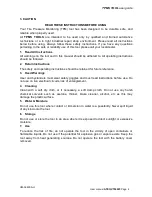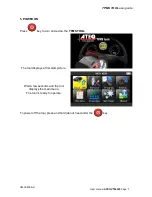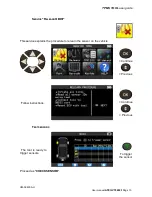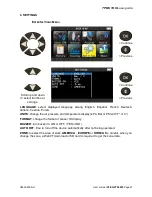
TPMS TOOL user guide
UM-36600A-U
User manual
ATEQ VT56025
Page 8
6. OPERATING INSTRUCTIONS
TPMS TOOL O
VERVIEW
Read and diagnose sensors,
OBD2 ECU
reset and transfer data to
ECU
.
Note: With most vehicles, if the vehicle is in “learn mode” the vehicle will also confirm that
the TPM sensor has communicated to the ECM with a series of horn beeps.
Service Procedure
Section 1.0: Read Sensor Test
Before servicing the tires/wheels, using your
TPMS TOOL
, trigger each
of the vehicle's sensors to make sure they are working properly.
This will eliminate the liability associated with replacing previously damaged or defective
sensors. This procedure will not change the vehicle settings because the vehicle has yet to
be put into learn/retraining mode. This procedure allows you to quickly identify damaged or
defective sensors, because some vehicles do not report a damaged or defective sensor
condition on the instrument cluster for up to 20 minutes.
Note: If the sensors do not trigger, please refer to the Troubleshooting section of this Guide.
Perform tire/wheel service.
For vehicles that require retraining, please see to Section 2.0
Section 2.0: Learning TPM System
With the vehicle in learn mode, begin by triggering the driver's front left (LF)
wheel sensor. Many vehicles will provide an audible chirp confirming that
the sensor ID has been learned by the vehicle on board computer.
The communication between the sensor and the on board computer
is also confirmed on LCD display of the
TOOL
.
The same procedure should be followed on all wheel sensors, in a
clockwise rotation, until all the vehicle sensors have been retrained.
After triggering the driver's rear wheel sensor, some vehicles will
chirp twice indicating that the TPM system has been retrained.
1 Start FL
4 End RL
Fig. 1
FR 2
RR 3
For vehicles that do not require retraining, we recommend you trigger each wheel sensor, one
final time, to make sure they are working correctly prior to releasing the vehicle to the customer.

























